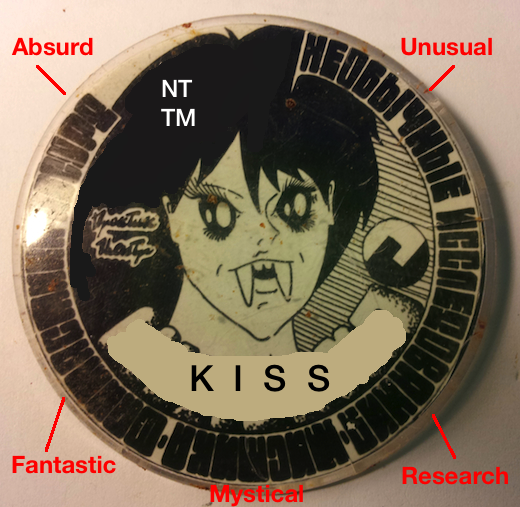The book and zine collection of John H. Costello, who passed away in early 2015, was donated to fandom recently at Readercon 26. Here I will take a quick look at some of the Russian language materials that I found among Costello’s collection.
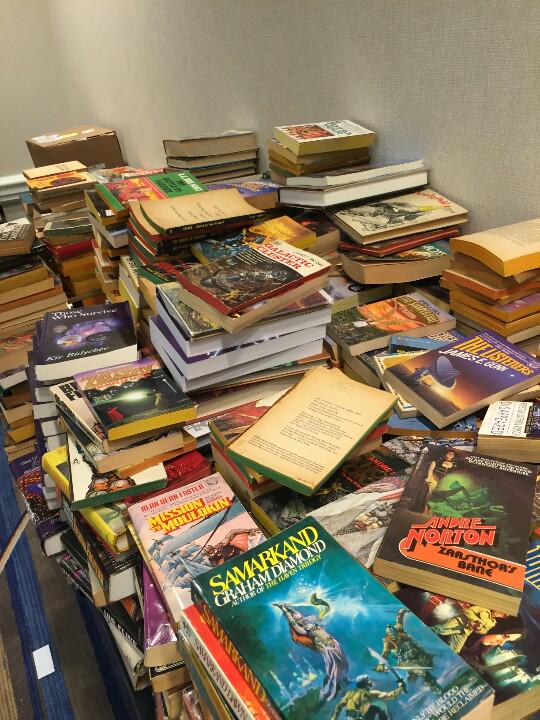
As I was digging through these large stacks of books, David Hartwell mentioned that Costello was a translator, so my attention was drawn to the foreign language books in the stacks, primarily in Russian and German.
After a little bit of follow-up research, I found out that Costello indeed had translated some of the works of Russian SF author, Kir Bulychev. One of the items I found among the piles of old zines was Bulychev’s poetry collection Chto nashe zhizn? [What is our life?].
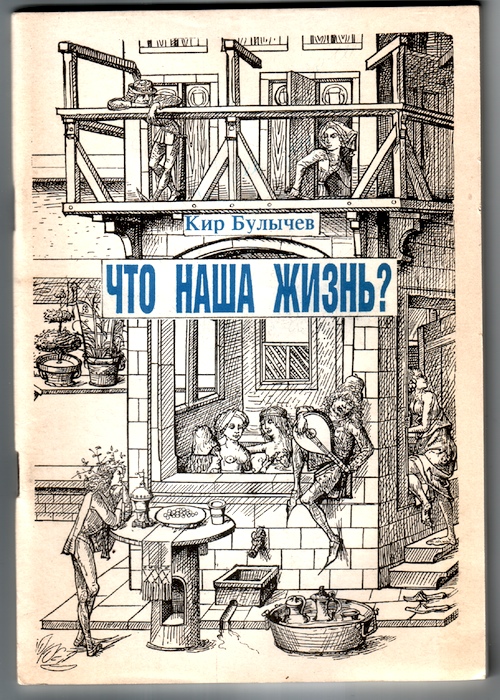
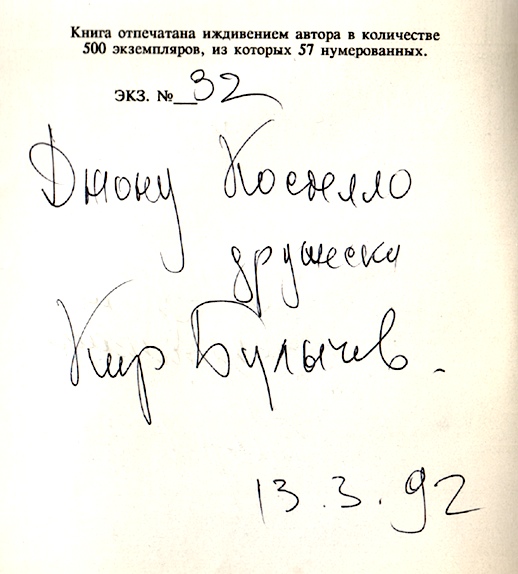
This wasn’t particularly interesting, aside from the inscription to Costello inside the front cover, and the odd choices of clip art used to illustrate the poems. I couldn’t quite figure out the poems:
In the world of little people,
Many of the usual whores.
But there are these whores
Less - aunt,
More - uncle.
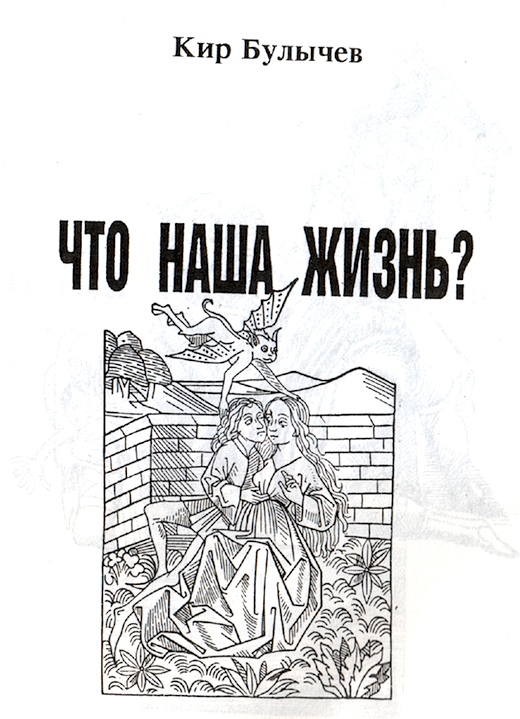
More interesting for me was the gorgeous copy of Technika Molodezhni (April 1975). I have always admired the gorgeous covers of this long-running magazine, but the copy I found in Costello’s collection is the first one I have actually held in my hands. It has all sorts of interesting contents and deserves a post of it’s own (coming soon!)
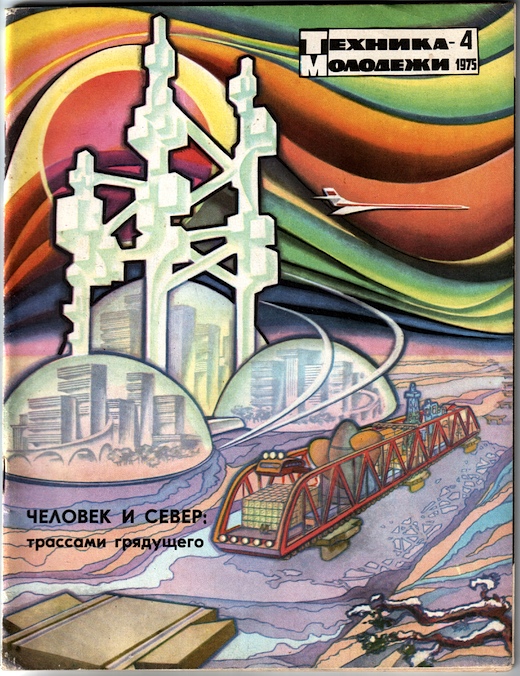
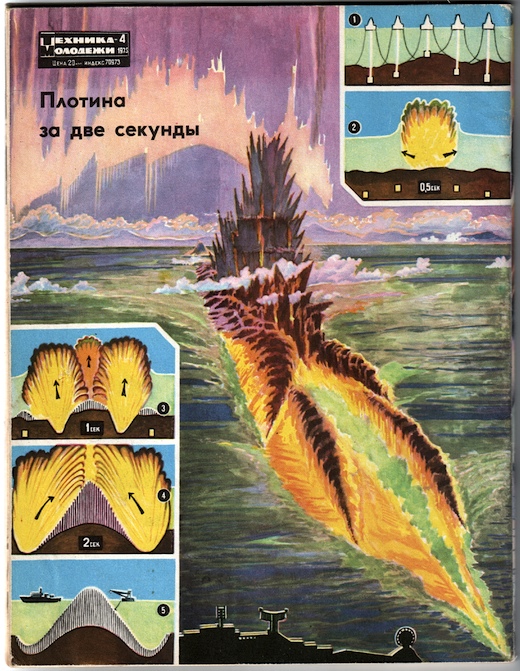
Definitely the most spectacular item I found was the Russian edition of Heinlein’s “Door into Summer“ [Dver v leta]. The wonderful cover art is uncredited. Nonetheless the glittering green eyes of the black cat over the sleeping astronaut are amazing and unforgettable!
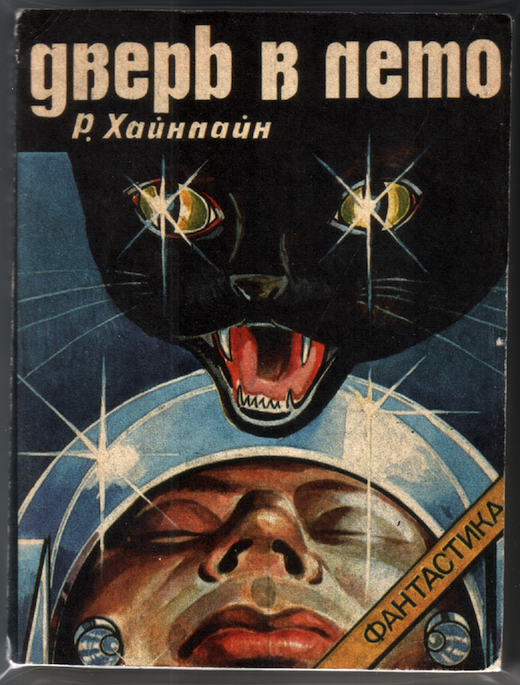
Then there was the cartoonists collection that I found called Joking Aside [Shutki v storonu] from 1991. This is quite an interesting period for Soviet cartoonists, as they were testing the waters of Glasnost. I particularly liked the cartoons of Garif Bacyrov (1944-2004). According to his biography on the Tretyakov Gallery website, he was born in Kazakhstan at Akmolinsky Prison Camp for the wives of men who were accused of betraying their country. This perhaps explains the intensity of his images, like the wrecking ball cracking open the shoulder of an anthropomorphic brick building.
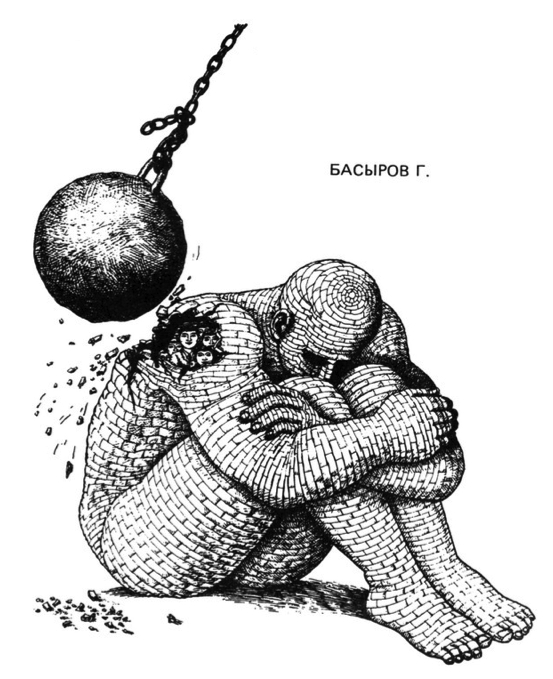
Another cartoonist I liked in this book was Mikhael Zlatkovskii, who also had a cynical sense of humor, of the type you might find in Zap Comix. This iconic illustration — apparently about the dangers of prostitution — also appeared in other publications around the same time.
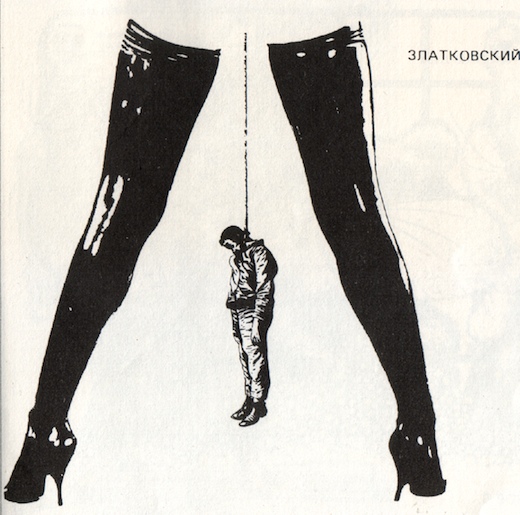
Then there was the humorous illustration of two opposing camps of protestors. The farm animals marching under the sign: “BREAD!” facing off against humans who are marching under the sign “MEAT!” Somehow, this illustration by I. Novikov seems relevant today, too, in the context of animal rights & veganism against carnivores. But I don’t really know what it meant in Russia in 1990…
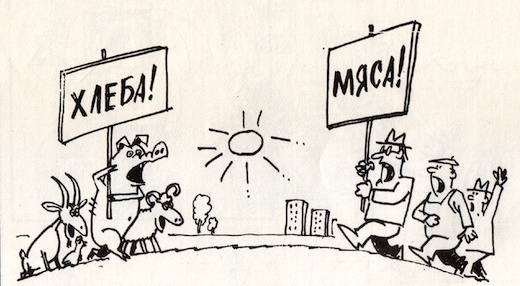
For the curious you can download the whole book of Joking Aside as a PDF.
From the fannish perspective, probably the most historically interesting find was a copy of FENZOR #1, a Russian fanzine edited by Sergei Berezhnoi and published in May 1990. This is just the coolest little fanzine (about 11 x 14cm in size), very nicely printed in crisp type and with neat line drawings. The inscription shows that the editor was keen to share the premiere issue of FENZOR with his first American friend, John (Costello)!
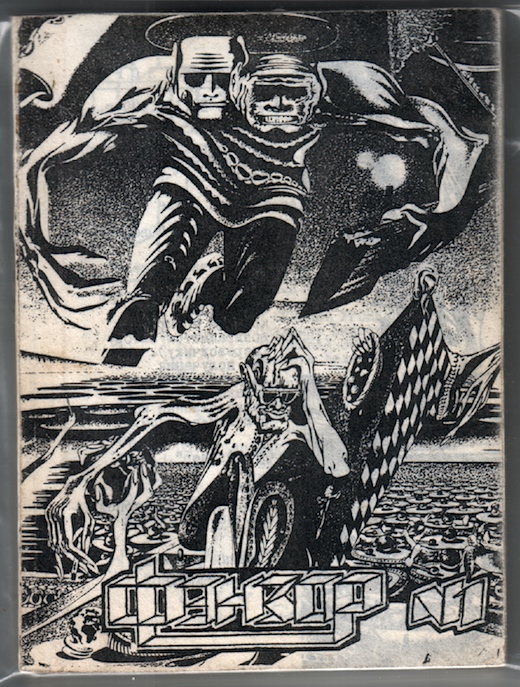
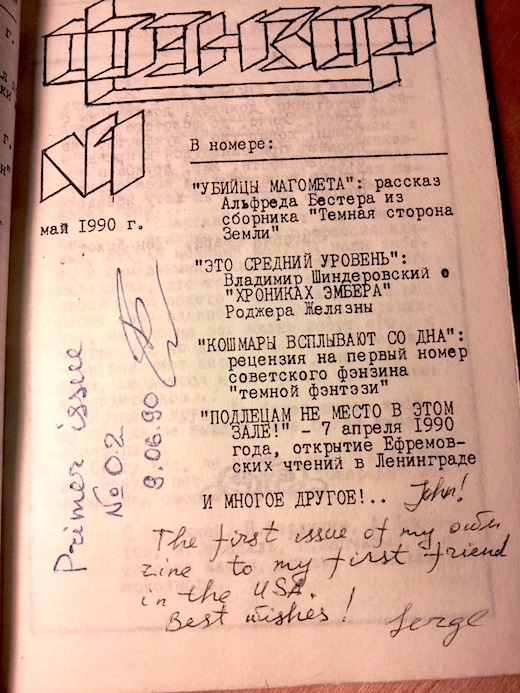
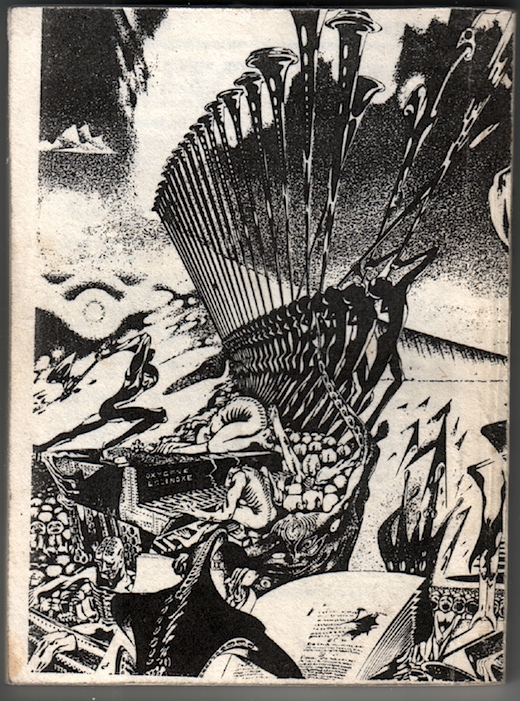
By far the strangest item I found in Costello’s collection was a custom-made fannish pinback button featuring a Japanese manga-style vampire. The vampire appears above the balloon-style font that says: KISS [Nimta]. On the upper left, in the vampire’s hair, are the letters NTTM, which I am guessing as referring to the Tsentr nauchno-tekhnicheskogo tvorchestva molodozhi, or the
Center for Scientific and Technical Creativity of Youth.
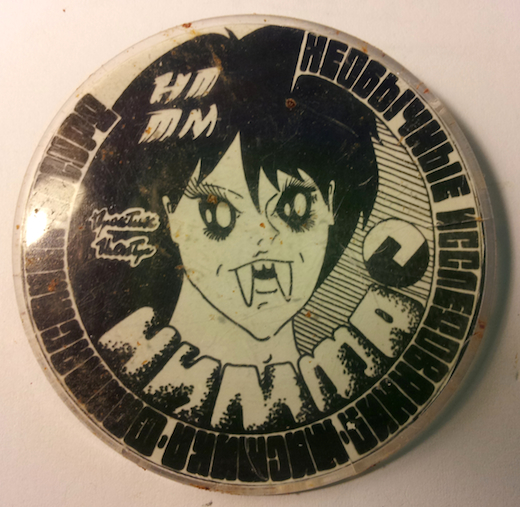
This NTTM seems worty of further research. It appears to have been the legacy institution built to replace the old Komsomol (Young Pioneers) of the Soviet Union, as a way to promote the sciences for young people in the new Russia. Apparently it was built on the crumbling and despirited edifice of the Communist cadre system. One can only assume that the usage here on this badge is tongue-in-cheek, and a sort of snarky reference to the “authority” of their fannish mission.
The text encircling the badge is more what I would expect: “Unusual research into the Mystical, Fantastic, and Absurd [Neobychnyye Issledovaniya Mistika Fantastika Absurd].”
The transition of Science Fiction fandom from the Soviet period to the Russian Federation, has got to be interesting, though I know so little about it. These lucky finds among the items of John H. Costello’s library are the first window I have had on this bit of fannish history. Hopefully these leads will take me down some interesting pathways.
